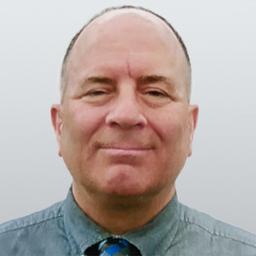Page 16 of Major League Baseball’s rule book lists rule 4.06: No Fraternization. In practice, however, this rule is rarely ever enforced.
In MLB’s Official Baseball Rules (2025 edition), nine members of the Official Playing Rules Committee stamped their approval of all 163 pages published.
Rule 4.06 on page 16 jumps out as a head-scratcher. It reads: Players in uniform shall not address or mingle with spectators, nor sit in the stands before, during, or after a game. No manager, coach or player shall address any spectator before or during a game. Players of opposing teams shall not fraternize at any time while in uniform.
So, in following the letter of the law to rule 4.06, when players sign autographs during batting practice or pose for selfies with invited guests sitting in lower level seating, they could be fined?
As bizarre as rule 4.06 appears, it’s right there on page 33 in former ballplayer Art Shamsky’s new book—“Mets Stories I only Tell My Friends.” Shamsky, a member of the New York Mets’ 1969 World Series champions, recalls crossing paths with his former Cincinnati Reds teammate Frank Robinson while on the field before one of the Fall Classic games. Robinson was with the Baltimore Orioles, who opposed the Mets in 1969. Just a hello was exchanged. Particularly during the season that was celebrated as the 100th anniversary of professional baseball, the appearance of men in different uniforms were rivals. First bumps, high fives, or even hugs on the playing fields exchanged by opponents was non-existent.
However, “if we enforced this [rule 4.06] how would kids get autographs?” former umpire Joe West explained to The Epoch Times in an email. “Dale Murphy, who was far and away the nicest player to ever live, would sign autographs right up until he was going on the field.”
Baseball fans catching a game at their favorite team’s stadiums already have a degree of obstruction to battle to catch the attention of their heroes in uniform. Since 2018, MLB has implemented a policy calling for all 30 teams to put up protective netting that reaches along the first and third baselines. The netting’s objective is said to have fans’ safety in mind. With fans distracted at some point during a game, in theory, the netting will block some foul balls heading in their direction.
Attempting to squeeze a ball or baseball card through or under the netting has become an art for even the most seasoned collector. The last thing a player wants to do prior to a game is have to look over his shoulder, to see if an umpire is eyeing him, and a possible fine will follow—all in the name of making an unforgettable moment with a fan.
West, who worked 43 seasons and more than 5,000 games, including a no-hitter, perfect game, World Series, and all-star classics, believes that rule 4.06’s creation wasn’t meant to keep fans and players a distance from each other.
“The rule was put in place to keep players away from shady characters such as gamblers and the like. It was not intended to keep the players from signing autographs.”

Whereas West made his MLB umpiring debut in September 1976, three seasons earlier, John D‘Acquisto made his pitching debut with the San Francisco Giants. A first-round draft pick of the Giants in 1970, D’Acquisto was a big-leaguer through the 1982 season with the Oakland A’s. Players back then were more stringent on how they conducted themselves when in uniform on the field, consciously or subconsciously of rule 4.06.
“No. Players in my era weren’t as friendly with opposing teams on the field as it appears today,” D'Acquisto, who authored his autobiography “Fastball John” in 2016, told The Epoch Times during a phone conversation on Friday. “Occasionally there would be some talk among us but not much.”
D‘Acquisto looks back to his friendship with Pete Rose. Rose, the game’s all-time hits leader (4,256), who passed in 2024, would seek out his pitching friend to talk, but away from the view of ticket buyers. D’Acquisto and Rose would catch up on their lives and careers, quietly, outside the clubhouses.
“There wasn’t much fraternization back then. It was frowned upon. Some other general managers and team presidents really didn’t like it, either. When I was with the San Diego Padres, [team president] Buzzie Bavasi really disapproved of fraternization.”
As D‘Acquisto assesses rule 4.06 in today’s MLB, he speaks of seeing the obvious, players still wanting to beat each other in a game and claiming bragging rights. But, with so many more players coming from other countries than in D’Acquisto’s heyday of the 1970s, it seems only natural that they would want to share a hug or slap on the back in the outfield.
As long as the MLB enforces rule 4.06, “then it’s a rule, and will have some effect on a game,” he says. “If the rule isn’t enforced, then it’s a waste of time to worry about it.”







